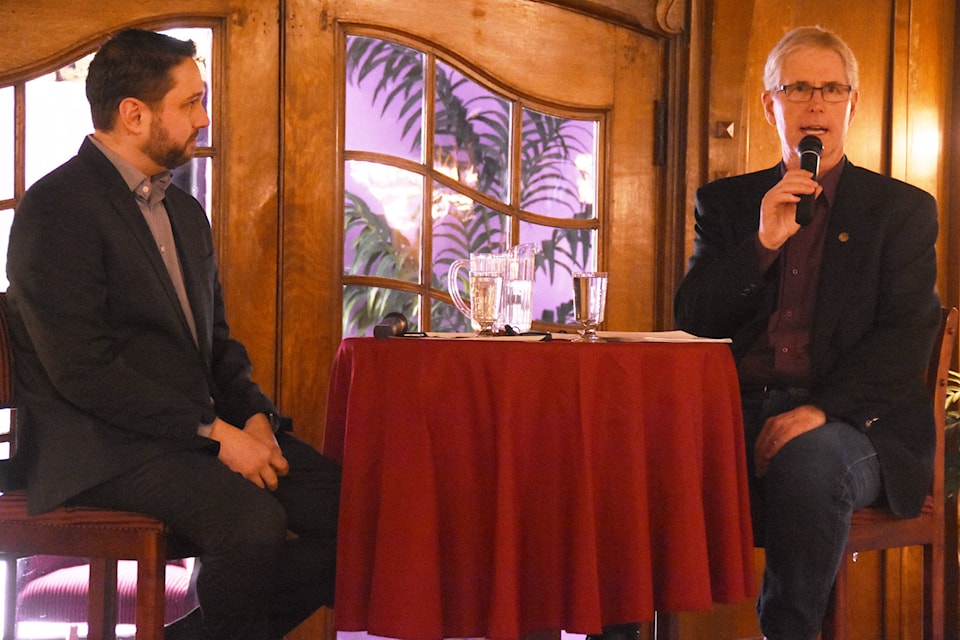Kimberley mayor Don McCormick touted the city’s relationship with Cranbrook in an address to the Cranbrook Chamber of Commerce on Wednesday at the Royal Alexandra Hall.
McCormick spoke about Kimberley’s transition from a natural resource dependent community to a tourism-based economy following the closure of the Sullivan Mine in 2001.
McCormick noted that there was a period of nearly 10 years following the closure of the mine where the community was searching for an economic identity.
In between the closure of the mine until about 2011, McCormick noted that it was depressing as the Platzl struggled to attract businesses and the community searched for a new way to bring revenue into the city.
That eventually came in the form of young entrepreneurship, says McCormick, which has completely revitalized the town and injected a vitality into the community that hasn’t been present in a long time.
McCormick pointed to the relationship between Cranbrook and Kimberley, noting how it changed after the mine shut down, as Kimberley had been a company town that was economically self-sustaining.
Right up until the mine closed.
“No one can be an island and expect to be competitive,” McCormick said.
The day before the 2014 municipal elections, McCormick met with Cranbrook mayor Lee Pratt to chart a way forward for the two communities, which is dependent on attracting good-paying jobs.
“The future is together,” McCormick told the crowd.
Every day, there are 4,000 cars driving Highway 95A between the two cities, he said, as there are Kimberlarians who work in Cranbrook and vice versa.
Both municipalities are facing a housing crunch; as supply is down in both Cranbrook and Kimberley. McCormick says the situation has been exacerbated by short-term rentals such as Airbnb.
However, there is opportunity as there are 50 active Airbnb hosts in Kimberley that saw 2,200 guest arrivals last year.
McCormick said that instead of fighting short-term rentals, municipalities need to embrace Airbnb and get it regulated, noting that places like Fernie, Nelson and other tourism-based communities have made good progress.
Seniors housing is also another factor to consider in the equation, as the Kimberley mayor noted that there isn’t enough multi-unit residential living facilities that cater to seniors who want to downsize from a house but aren’t ready to move into an assisted-living facility.
When it comes to attracting new residents or business, McCormick says it’s the people who are the biggest asset to the area.
But there are other factors as well, such as the SunMine, believe it or not, he added.
“It’s an amazing marketing opportunity for the city and the region,” McCormick said.
It’s not about the solar mine itself but more about what it represents as a community that embraces something new and progressive, he continued.
The SunMine, a city-owned asset, currently generates one megawatt of power, but is hoping to offload the facility to a private investor in order to eliminate risk to the taxpayer.
If the facility isn’t expanded to include a second megawatt — a $2 million investment — then the city will have to dip into taxpayer dollars to run the operation, McCormick said.
However, McCormick says the city has been in discussions with an investor and is currently navigating the labyrinth of conditions that come with the sale of a publicly-owned asset.
McCormick said he is confident an announcement will be made likely within the next few months that will include a commitment to build out to the second megawatt.
